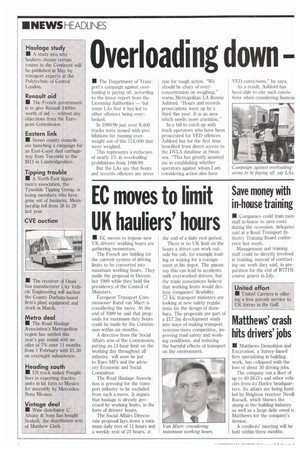EC moves to limit UK hankers' hours
Page 6

If you've noticed an error in this article please click here to report it so we can fix it.
• EC moves to impose new UK drivers' working hours are gathering momentum. The French are bidding for the current system of driving limits to be converted into maximum working hours. They made the proposal in December 1989 while they held the presidency of the Council of Ministers.
European Transport Commissioner Karel van Miert is considering the move. At the end of 1989 he said that proposals for maximum duty hours could be made by the Commission within six months.
A directive from the Social Affairs arm of the Commission, putting an 11-hour limit on the working day throughout all industry, will soon be put to Euro MPs and the advisory Economic and Social Committee.
The Road Haulage Association is pressing for the transport industry to be excluded from such a move. It argues that haulage is already governed by working limits, in the form of drivers' hours.
The Social Affairs Directorate proposal lays down a minimum daily rest of 11 hours and a weekly rest of 24 hours, at the end of a daily rest period.
There is no UK limit on the hours a driver can work outside his cab, for example loading or waiting for a consignment at his depot. The unions say this can lead to accidents with overworked drivers, but the trade associations believe that working limits would destroy companies' flexibility. D EC transport ministers are looking at new safety regulations for the design of drawbars. The proposals are part of a 217.5m development study into ways of making transport systems more competitive, improving road safety and working conditions, and reducing the harmful effects of transport on the environment.








































































